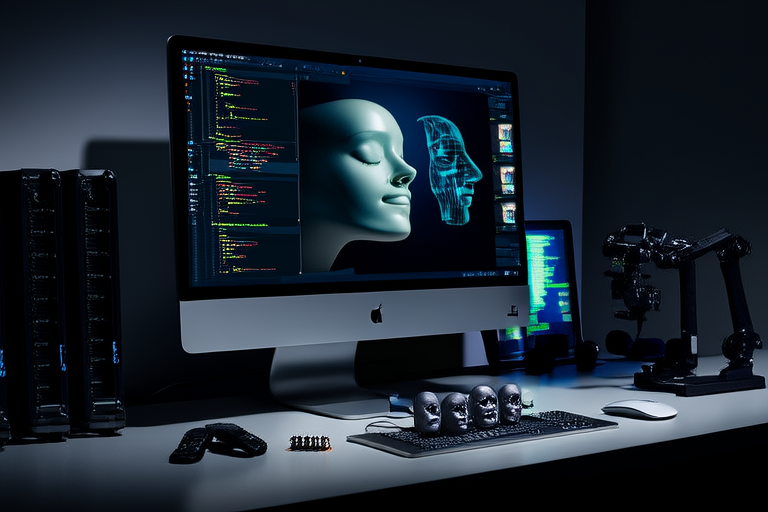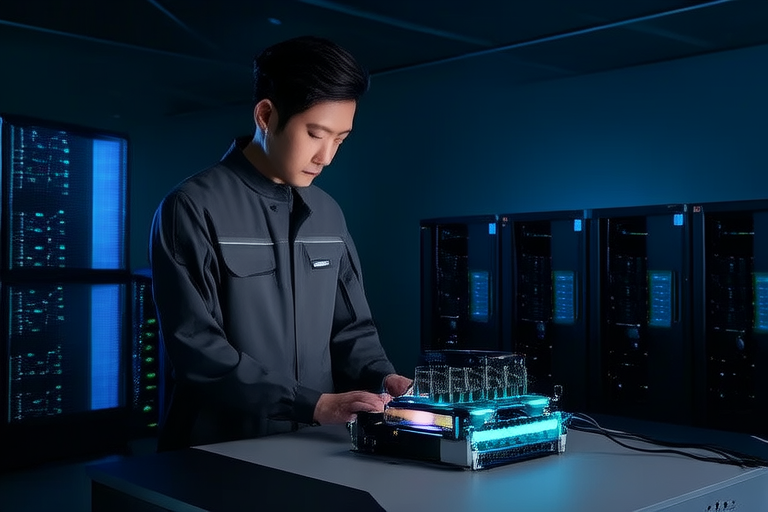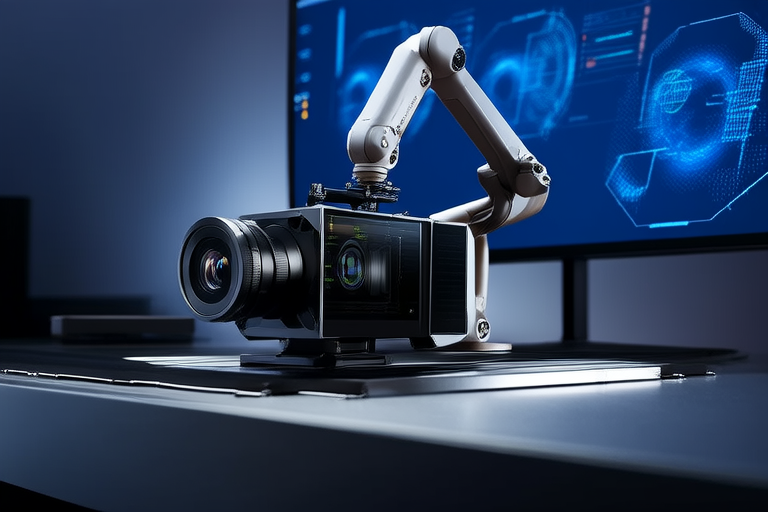The Evolution of Computer Vision: From Pixels to Perception
Introduction to Computer Vision
Computer vision is a field of artificial intelligence (AI) that enables machines to interpret and understand visual information from the world, much like the human visual system. By processing images or video streams, computer vision systems can identify objects, recognize patterns, and make decisions based on visual data. This technology has become a cornerstone of modern innovation, powering applications in diverse industries such as healthcare, automotive, retail, and security.
In today’s technological landscape, computer vision is indispensable. It enhances automation, improves efficiency, and enables new capabilities that were once considered science fiction. For instance, self-driving cars rely on computer vision to navigate roads safely, while medical imaging systems use it to detect diseases with remarkable accuracy. As AI continues to evolve, the importance of computer vision will only grow, making it a critical area of study and development.
A Historical Overview of Computer Vision
The journey of computer vision began in the 1960s, when researchers first attempted to teach computers to “see.” Early efforts focused on basic tasks such as edge detection and shape recognition, relying on simple algorithms and limited computational power. These pioneering projects laid the groundwork for the field but were constrained by the hardware and data limitations of the time.
A significant milestone came in the 1980s with the introduction of convolutional neural networks (CNNs), a class of deep learning algorithms inspired by the human brain’s visual cortex. Although CNNs were conceptualized decades earlier, they gained prominence only when computational resources became more robust. The 1990s saw further advancements as researchers developed techniques for feature extraction and object recognition, gradually moving beyond pixel-level analysis to more sophisticated image understanding.
The 21st century marked a turning point for computer vision, driven by three key factors: algorithmic breakthroughs, hardware improvements, and the availability of large datasets. The advent of deep learning in the 2010s revolutionized the field, enabling machines to achieve human-level performance in tasks such as image classification and facial recognition. Simultaneously, the rise of powerful GPUs (graphics processing units) and cloud computing provided the computational muscle needed to process vast amounts of visual data efficiently.
The Role of Algorithms, Hardware, and Data
Algorithms have been at the heart of computer vision’s evolution. Traditional methods relied on handcrafted features, where engineers manually defined rules for identifying patterns in images. While effective for specific tasks, these approaches lacked scalability and adaptability. The emergence of deep learning changed this paradigm by allowing algorithms to learn features automatically from raw data. This shift not only improved accuracy but also expanded the range of problems computer vision could address.
Hardware advancements have played an equally vital role. Early computer vision systems were limited by slow processors and insufficient memory, making real-time applications impractical. The development of specialized hardware, such as GPUs and TPUs (tensor processing units), has dramatically accelerated computation speeds, enabling complex models to run efficiently. Additionally, edge devices equipped with AI chips now allow computer vision to operate directly on smartphones, cameras, and other IoT devices.
Data availability has been the third pillar of progress. Deep learning models require massive datasets to train effectively, and the proliferation of digital images and videos has provided the necessary fuel. Platforms like ImageNet, which contains millions of labeled images, have been instrumental in advancing research and benchmarking performance. Open-source initiatives and crowdsourcing have further democratized access to data, fostering innovation across the globe.
Modern Applications of Computer Vision
Today, computer vision is transforming industries by enabling machines to perceive and interact with the world in meaningful ways. In healthcare, it aids in diagnosing diseases through medical imaging, such as detecting tumors in X-rays or analyzing retinal scans for signs of diabetes. Surgical robots equipped with computer vision can assist doctors by providing precise guidance during procedures, reducing the risk of errors.
The automotive industry has embraced computer vision to develop autonomous vehicles. Cameras and sensors capture real-time data about the environment, which is then processed to identify obstacles, read road signs, and predict the behavior of other drivers. This technology not only enhances safety but also paves the way for fully driverless cars.
Retail is another sector benefiting from computer vision. Stores use it for inventory management, customer analytics, and cashier-less checkout systems. For example, Amazon Go stores leverage computer vision to track shoppers and charge them automatically for items they pick up, creating a seamless shopping experience. Similarly, fashion retailers employ virtual fitting rooms that use augmented reality and computer vision to help customers visualize how clothes will look on them.
In the realm of security, computer vision powers surveillance systems capable of detecting suspicious activities, recognizing faces, and monitoring crowds. These applications enhance public safety while raising important questions about privacy and ethics, which will be discussed later.
From Pixels to Perception: The Leap in Capabilities
One of the most remarkable aspects of computer vision’s evolution is its transition from simple pixel analysis to complex perception tasks. Early systems could detect edges or shapes but struggled with context and meaning. Modern systems, however, excel at scene understanding—interpreting entire environments and predicting future events based on visual cues.
Object recognition has reached unprecedented levels of accuracy, thanks to deep learning models trained on diverse datasets. These systems can distinguish between thousands of categories, even under challenging conditions such as poor lighting or occlusion. Scene segmentation takes this a step further by dividing an image into regions corresponding to different objects or surfaces, providing a detailed understanding of the visual scene.
Real-time decision-making is another frontier where computer vision shines. Whether it’s guiding drones through dynamic environments or assisting robotic arms in manufacturing, the ability to process visual data instantly and act accordingly is reshaping industries. This capability is particularly valuable in scenarios requiring rapid responses, such as disaster response or military operations.
The Future of Computer Vision
As we look ahead, several trends are poised to shape the future of computer vision. One promising direction is multimodal learning, where systems integrate information from multiple sources, such as text, audio, and video, to gain a richer understanding of their surroundings. This approach could lead to more intuitive human-computer interactions and enhanced contextual awareness.
Another trend is the increasing focus on explainability and transparency. As computer vision systems become more pervasive, there is growing demand for models that can justify their decisions in understandable terms. Researchers are exploring techniques to make AI outputs interpretable, ensuring that users can trust and verify the results.
Despite its potential, computer vision faces challenges that must be addressed. One concern is bias in training data, which can lead to skewed or unfair outcomes. Efforts are underway to create more inclusive datasets and develop algorithms that mitigate bias. Additionally, the energy consumption of large-scale models raises environmental concerns, prompting calls for more sustainable practices in AI development.
Ethical considerations loom large over the field. Issues such as surveillance misuse, loss of privacy, and job displacement due to automation require careful thought and regulation. Policymakers, technologists, and ethicists must collaborate to establish guidelines that balance innovation with societal well-being.
Conclusion
The evolution of computer vision from rudimentary pixel analysis to advanced perception tasks exemplifies the transformative power of AI. Over the decades, breakthroughs in algorithms, hardware, and data have propelled the field forward, unlocking possibilities that were once unimaginable. Today, computer vision is integral to countless applications, enhancing productivity, safety, and convenience across industries.
Looking to the future, the continued advancement of computer vision promises even greater impact. However, realizing its full potential will require addressing technical, ethical, and societal challenges. By fostering collaboration and prioritizing responsible innovation, we can ensure that computer vision serves as a force for good, enriching lives while respecting individual rights and values.



